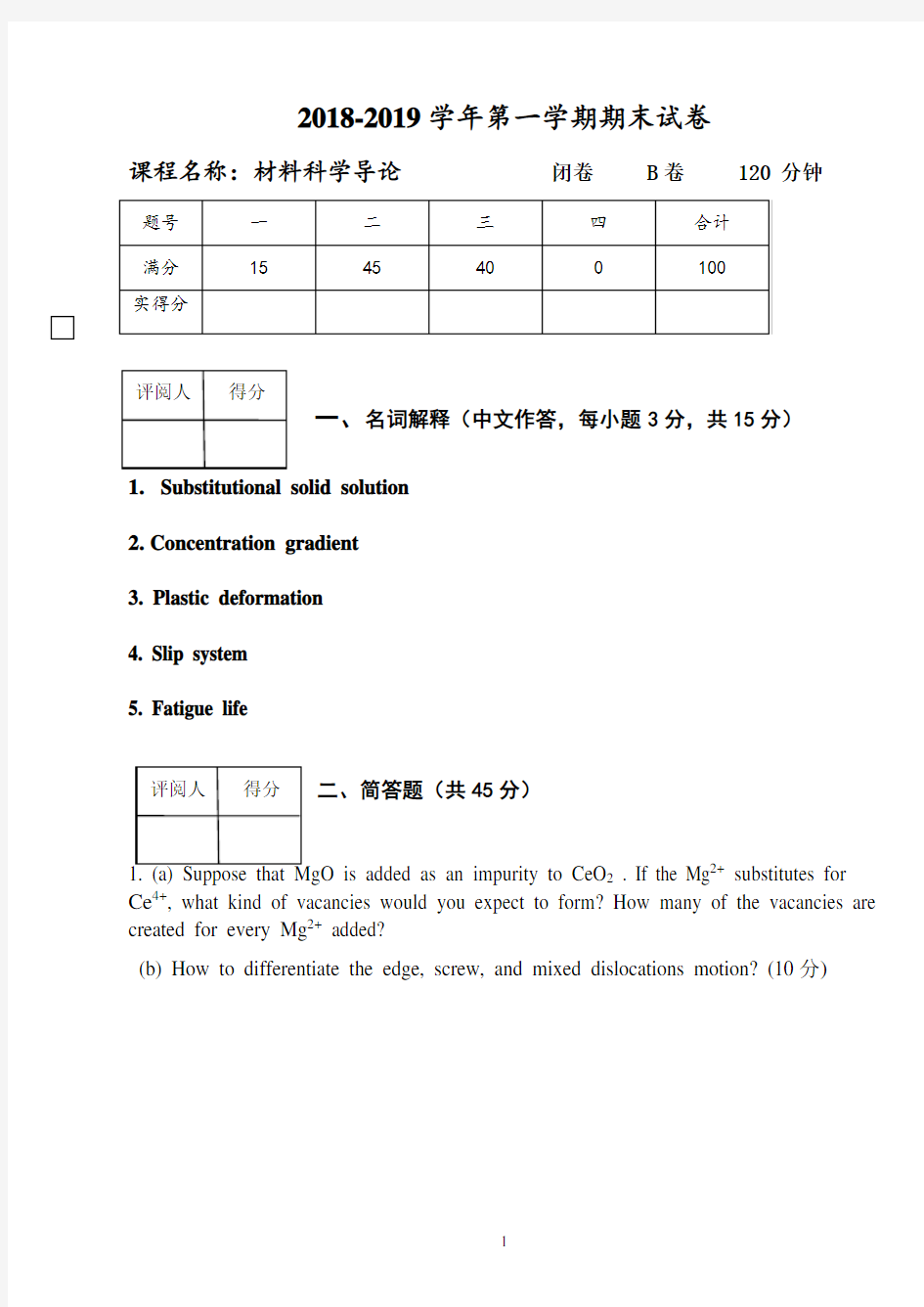材料科学导论 期末试卷(3)


2018-2019学年第一学期期末试卷
课程名称:材料科学导论 闭卷 B 卷 120 分钟
一、 名词解释(中文作答,每小题3分,共15分)
1. Substitutional solid solution
2. Concentration gradient
3. Plastic deformation
4. Slip system
5. Fatigue life 二、简答题(共45分)
2 . If the Mg 2+ substitutes for Ce 4+, what kind of vacancies would you expect to form? How many of the vacancies are created for every Mg 2+ added?
(b) How to differentiate the edge, screw, and mixed dislocations motion? (10分)
2. (a) How to differentiate deformation mechanism of slip and twinning?
(b) Describe in your own words the solid solution strengthening mechanism. Be sure to explain how dislocations are involved in the strengthening techniques? (10分)
3. (a) Why are ceramic materials generally harder yet more brittle than metals?
(b) For polymer material, what do mechanical properties of materials mainly include? (10分)
4. (a) Cite two major differences between martensitic and pearlitic transformations.
(b) Cite two reasons why martensite is so hard and brittle (10分)
5. The following figure is the schematic representation of grains of austenite γ phase. Briefly draw up its microstructures of eutectoid stee l containing 0.76wt%C. (5分)
三、计算题(每题10分,共40分)
评阅人得分
1. (a) Calculate and compare the planar densities of the (110) plane for BCC.
(b) Compute and compare the linear densities of the [110] direction for BCC.
2. The purification of hydrogen gas by diffusion through a palladium sheet was discussed in Section 6.
3. Compute the number of kilograms of hydrogen that pass per hour through a 5-mm thick sheet of palladium having an area of 0.25 m2 at 500℃. Assume a diffusion coefficient of 1.0 × 10 – 8 m2/s that the concentrations at the high- and low-pressure sides of the plate are 2.6 and 0.8 kg of hydrogen per cubic meter of palladium, and that steady-state conditions have been attained.
3. A tensile stress is to be applied along the long axis of a cylindrical brass rod that has a diameter of 9.0 mm. Determine the magnitude of the load required to produce a 2.7 × 10 -3 mm change in diameter if the deformation is entirely elastic. Poisson’s ratio for this material and its modulus of elasticity are 0.34 and 97 GPa, respectively.
4. A polystyrene component must not fail when a tensile stress of 1.25 MPa is applied. Determine the surface energy of polystyrene if the maximum allowable surface crack length is 0.611 mm. Assume a modulus of elasticity of 3.0 GPa .
